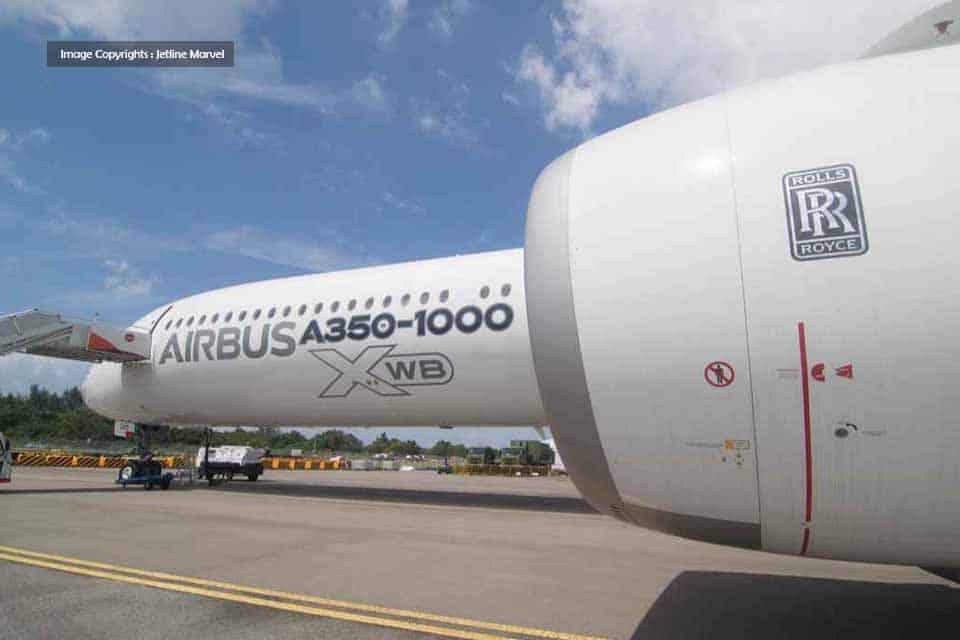Aerospace
Airbus & Boeing reports strong 2023 commercial aircraft orders and deliveries

In a testament to the resilience and adaptability of the aviation industry, both Airbus and Boeing have reported robust performances in 2023, marked by impressive commercial aircraft orders and deliveries. However, the year-end statistics highlight Airbus as the standout winner in this competitive landscape.
Boeing delivered 735 aircraft in 2023.
Airbus, a global leader in the aerospace sector, achieved a remarkable milestone by delivering a total of 735 commercial aircraft to 87 customers worldwide in 2023. This figure represents a notable 11% increase compared to the previous year, showcasing the company’s resilience and strong performance despite the challenges posed by a complex operating environment.
Full aircraft fleet deliveries for 2023
A220 family – 68
A320 family- 571
A330 family- 32
A350- 64
Total:735
The Commercial Aircraft business of Airbus recorded an outstanding 2,319 gross new orders, with 2,094 net orders. Among these, the A320 Family and A350 Family aircraft played a pivotal role, with 1,835 and 300 orders, respectively. This surge in orders is a clear indication of the industry’s commitment to modernizing fleets with the latest generation of fuel-efficient and technologically advanced aircraft.
Furthermore, the 2023 year-end backlog for Airbus stands impressively at 8,598 aircraft, underscoring the sustained demand for Airbus aircraft and the company’s ability to secure future business.
Boeing delivered 528 aircraft in 2023.
On the other side of the spectrum, Boeing, a key competitor in the aviation market, also reported significant achievements in 2023. The company delivered a total of 528 commercial airplanes throughout the year. This includes:
737: 396 deliveries
747: 1 delivery
767: 32 deliveries
777: 26 deliveries
787: 73 deliveries
Total: 528
While Boeing demonstrated strength in its commercial aircraft programs, the overall comparison with Airbus suggests a more substantial market share for the latter.
However, Airbus emerges as the clear winner, boasting impressive delivery numbers, a substantial order backlog, and a strategic focus on next-generation, fuel-efficient aircraft. As the aerospace landscape continues to evolve, Airbus appears well-positioned to maintain its leadership in the global commercial aircraft market.

Aerospace
Boeing Transfers Rocket Stage to NASA, Paving Way for Human Moon Mission

Boeing has achieved a significant milestone by providing NASA with the second core stage of the Space Launch System (SLS) rocket.
This crucial component, crafted at NASA’s Michoud Assembly Facility (MAF), is set to propel the Artemis II crew into lunar orbit, marking humanity’s return to deep space after a 50-year hiatus.
The monumental Boeing-built rocket stage, the largest element of the Artemis II mission, will embark on a journey aboard the Pegasus barge, traveling 900 miles to NASA’s Kennedy Space Center.
Comparison of two legendary aircraft B777x vs B747 aircraft:Click here
Upon arrival, it will be meticulously integrated with other essential Artemis II components, including the upper stage, solid rocket boosters, and NASA’s Orion spacecraft within the iconic Vehicle Assembly Building. This intricate integration process is a vital step toward the eagerly anticipated Artemis II launch, slated for 2025.
“Boeing-built products helped land humankind on the moon in 1969, and we’re proud to continue that legacy through the Artemis generation,” remarked Dave Dutcher, vice president and program manager for Boeing’s SLS program. “Together, with NASA and our industry partners and suppliers, we are building the world’s most capable rocket and paving the way to deep space through America’s rocket factory in New Orleans.”
NASA, Lockheed Martin Reveal X-59 Quiet Supersonic Aircraft:Click here
The delivery of Core Stage 2 marks a significant achievement in the evolution of the SLS rocket. Towering over 200 feet and powered by four RS-25 engines, this core stage, coupled with two solid-fueled booster rockets, will generate a staggering 8.8 million pounds of thrust. This immense power is crucial to launching Artemis II and future missions into the vast expanse of space.
The SLS rocket stands unparalleled in its capability to transport both crew and substantial cargo to the moon and beyond in a single launch. Its extraordinary capacity will facilitate the delivery of human-rated spacecraft, habitats, and scientific missions to destinations including the moon and Mars, ushering in a new era of space exploration.
-

 Travel1 week ago
Travel1 week agoAir India to Expand US Operations with Three New Routes After a Decade
-

 Travel2 weeks ago
Travel2 weeks agoWhy We Should Avoid These Stamps in a Passport
-

 Airlines1 month ago
Airlines1 month agoInvestigations Reveal Fake Chinese Titanium in Boeing and Airbus Jets
-

 Tech4 weeks ago
Tech4 weeks agoChina’s CATL Plans 1,800-Mile Electric Plane Launch by 2027
-

 Airport3 days ago
Airport3 days agoTop 10 Largest Airports in the World by Size
-

 Aerospace4 weeks ago
Aerospace4 weeks agoChina’s Fighter Jets Turn Wings into Autonomous Drones
-

 Airlines4 days ago
Airlines4 days agoAir India Rolls Out A350s for Delhi-New York JFK and Newark Routes
-

 Defence3 weeks ago
Defence3 weeks agoBoeing Enhances Chinook with New Engines and Block II Upgrades at $96 Million







